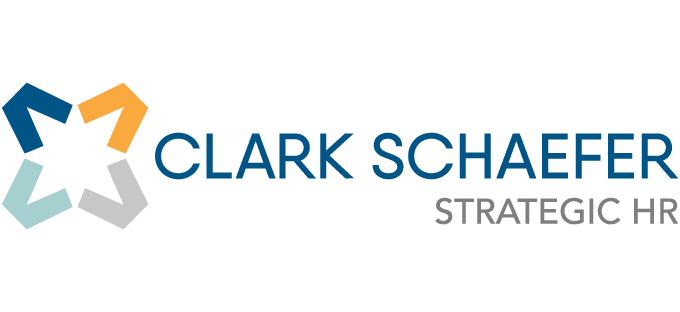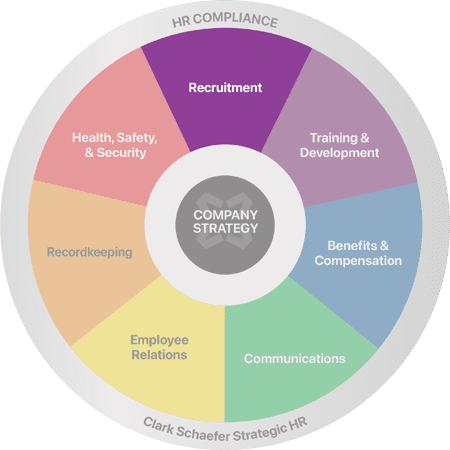Posts
What is the Cost of a Bad Hire?
Last Updatedin Recruitment Question of the Week
Hiring Tips: How to Prevent a Bad Hire
Last Updatedin HR Strategy, Recruitment, Training & Development Question of the Week

HR Question:
I know the cost of a bad hiring decision can be very expensive. What can I do to prevent a bad hire and make sure I select the best candidate into my organization?
HR Answer:
The best way to prevent a bad hire and avoid the resulting excessive costs is to thoughtfully consider your approach to hiring and refine the process. Much of the work on the front end will save you time and ensure the best possible hire. Here are some strategies to use to help avoid this type of misstep.
1. Job Posting Transparency
Assure the job posting is a realistic preview of the job and applicant questions are aligned with the role.
- Exit interview – To begin an effective recruiting process, start with the departing team member. Depending upon the circumstances of the departure, it can be helpful to understand why the current incumbent is leaving. Are there frustrations with the duties, equipment, or leadership that should be addressed before someone new is brought in? Here are some ideas of questions to ask in an exit interview.
- Clearly define job roles – Avoid vague job descriptions and focus on specific skills and expectations so nothing is left to interpretation. Make sure the job you are hiring for is a realistic preview of the job and its expectations. Many times employers post duties from an old job description only to learn half of the activities are no longer part of the role.
2. Engage In a Thorough Candidate Screening Process
Once you have selected candidate(s) that you feel are a great fit, conduct additional assessments to assure they are a fit culturally.
- Perform reference and background checks – Verify past performance and look for patterns in work history. For example, did they have a good relationship with their peers? Were they coachable and able to work as a team? How does the reference describe their job and contributions to the company?
- Determine cultural fit – Define your company’s values and ensure candidates align beyond technical ability. Ask tough questions to get to the core of their beliefs to assure you are aligned.
3. Utilize Standardized Interviews and Skills Assessments
- Standardize interview questions – Use a structured approach to assess candidates objectively leading to more long-term hires. Consider behavior-based questions to learn more about how the candidate handles a variety of situations. You may also want to include a variety of questions for use. Also, consider using more than one person to interview candidates to assure you get the full picture of their experience. Here’s our advice on how to effectively use panel interviews in your process.
- Conduct skills assessments – Evaluate technical and soft skills before making a hiring decision as they can impact team dynamics, productivity, and company culture, making course correction more complex and costly. Effective use of assessments can provide information you may not easily obtain during an interview. Whether it is their Excel skills or how they handle conflict, assessments can identify strengths and gaps in an individual’s skills. See our article linked here on additional tips for an effective recruiting process.
4. Implement a Strong Onboarding Process
Set clear expectations from day one – Provide new hires with clear discussion and sharing of detailed goals, expectations, and metrics for success, including timelines, leaving no room for ambiguity.
- Offer structured training and support – Ensure new employees have the resources needed to succeed early on so they can meet the set expectations. Remind them that their success is your success, and you’re there to support them on their journey.
- Ongoing support – Remember, onboarding is not one day or one week but rather a process that continues through the first six months to one year of a new hire’s employment.
Strong onboarding programs can improve new hire retention and productivity in organizations. According to Gallup analytics, one in five employees either report that their most recent onboarding was poor — or that they received no onboarding at all.
A poor hiring decision can waste time and money, making the selection process more crucial than ever. By improving hiring processes, screening more thoroughly, and setting clear expectations, businesses can limit hiring mishaps and build stronger, more productive teams that align with company goals and values. Taking the time to hire right the first time saves money, protects team morale, and positions your organization for long-term success.
Thank you to Patti Dunham, Director Business Strategy and Quality and Aubrey Ritchie, Content Marketing Specialist for contributing to this article.
Do you need recruiting help? Our Outsourced Recruitment Services may be the perfect solution. We’ll manage the full process or support just where you need it for one or all of your positions. Plus, we offer flexible pricing options including retained, contingency, and hourly rates! Call Clark Schaefer Strategic HR today at (513) 697-9855 or email us for a free recruiting consultation.
Need recruiting help?
Let’s see how our flexible recruitment services can save the day!
What Is an RPO?
Last Updatedin Recruitment Question of the Week

HR Question:
I keep hearing about RPOs… but I don’t have a clue what they are. What are they, and should I be looking into one?
HR Answer:
It’s nearly impossible to keep up with all of the business acronyms, new or old, so it’s not shocking that you may not have heard of an RPO – particularly if you work outside of the HR space. An RPO – or Recruitment Process Outsourcing – can be beneficial to all kinds of companies, particularly if you’re working with limited staff dedicated to human resources.
What is an RPO?
The Recruitment Process Outsourcing Association defines RPOs as something akin to business process outsourcing, where “an employer transfers all or parts of its recruitment processes to an external service provider.” While that might sound intimidating, think of it this way – an RPO takes care of clearing your desk of resumes, pending background checks, job descriptions desperate for review, and all of the other paperwork that goes along with hiring new employees. An RPO can operate as a seamless extension of your organization throughout the entire recruiting and selection process.
An RPO will require an element of transparency that you may not be used to, but don’t worry, it’s in the name of better service. An RPO will want to understand your organizational culture, how you typically approach your recruitment process, the reason why you’ve done it this way in the past, and previous candidates that you’ve worked with or considered. This will keep the RPO team from spinning wheels already spun while making sure to move your process forward to find the best candidates who fit your needs and your organizational culture.
Benefits of an RPO
Not only does an RPO take care of the more tedious and time-consuming aspects of talent acquisition, but they can also tackle some of the softer approaches that recruiting calls for in today’s market. With the additional time and attention RPO teams are able to afford candidates, they can create the “human touch” that is so often called for in a recruitment process. Don’t believe us? Check out Monster’s article on candidate experience and why it matters.
RPOs can also be a significant money-saving recruitment solution. When you consider the average placement rate of many staffing firms – which ranges from 25-40% – versus the hourly rate of many RPOs, you can save thousands of dollars. For example, take a new manager position with a target salary of $60K a year. If you were to work through a staffing firm, that new hire could cost you between $15,000 – $24,000, not to mention the time and energy put in by your team to hire and onboard this individual. Should you work with an RPO (with an hourly rate of $150) using an average of 55 hours to fill a position, you’re only spending $8,250 – a cost-savings of almost $7,000 – $16,000. This provides a compelling argument for using an RPO if you’re seeking buy-in from your CFO.
Is an RPO right for you?
Even if an RPO is a great process for some businesses, it’s not meant for all. This tends to be a good recruiting solution for businesses that have a lean or limited recruiting team. If you don’t have the resources or your plate is too full, reaching out to an outsourced recruiting firm can keep your timeline moving with a limited time commitment on your part.
If you don’t need help month-in, month-out or your needs ebb and flow more than you can plan for, an RPO may be a good fit. Ideally, their consultative approach should be able to be turned on or off when your needs call for them.
Or perhaps you may need a recruiting expert or a strategic partner. You and your team might recognize the limits of your understanding or knowledge in recruiting while doing your best to avoid compliance issues. An RPO provides an opportunity to partner with a team of talent acquisition experts who can help to support your recruiting and compliance needs.
What to look for in an RPO
While there are many RPOs out there, not all are the same. When trying to assess which RPO is right for you, consider the following items:
Expertise
If you’re handing off your recruitment process with an increased level of transparency, you want to make sure you can trust the team with which you are partnering. Take a look at the level of expertise the company boasts. What is their approach to talent acquisition? Are they thought leaders in their industry? Do they create and share helpful content? Are they able to speak to providing a positive candidate experience, data analytics, and cost-savings?
Examples & Testimonials
Take a look at their online reviews. Have others in your industry used this RPO? Is this company able to speak to the experience that both candidates and clients have had during their time using their services? Does this company have experience in your industry and understand the nuances that might come with your jobs? Consider sharing your recruiting challenges and ask how they intend to address them. Or, ask about the challenges they have faced recruiting in your industry and how they have overcome those challenges.
Clear Communication
Can this company clearly outline their costs and how they will save you money? Can they provide an accurate prediction of potential costs you may encounter along the way? Are they as timely with you as they are with candidates? How will they communicate progress with you? This may be another good reason to dig into your network and seek client/candidate testimonials to see what others say.
As with any business service you consider working with, be sure to do your homework first to ensure you find the best RPO for your organization.
Thank you to Melinda Canino and Samantha Kelly for contributing to this HR Question of the Week.
Do you think an RPO might be a fit for you? Strategic HR can tackle your recruiting challenges so you can have time to do what you do best. Learn about our approach to Outsourced Recruitment or Contact Us today.
What Should I Use To Measure Recruitment Performance?
Last Updatedin Recruitment Question of the Week
HR Question:
I need to measure our recruitment performance and develop a metric to do so. How do I set that up and what would I measure?
HR Answer:
Since there isn’t a universal formula for calculating recruitment performance and costs, you will need to determine what costs you want to track and attribute to your hiring efforts. There are many direct and indirect costs that you may consider including in the calculation. Below are some of the basic costs that you should consider when measuring recruitment performance.
Sourcing
Costs incurred to source for candidates using online job posting boards, resume banks, social media ad campaigns, etc. Be sure you divide the cost of these sources by the number of positions you are filling that use the source on order to have a true cost for a specific hire.
Screening
Costs associated with the time and expense for your staff to handle and review resumes and applicants for a particular position, including:
- Administrative staff time to open, respond, and route resumes to the hiring team. To calculate this time, figure out an average cost per resume and track how many resumes are received for each job to calculate the administrative cost per job.
- Hiring team/recruiter time spent screening through resumes and following up as needed. Similar to administrative costs, this can be calculated per resume/applicant to determine an average cost.
- Be sure to track time spent on preliminary phone interviews or pre-screens. Look at how many were conducted and the time spent by the recruiter to prepare, conduct, summarize and communicate the results of those interviews.
- Do you have an automated applicant tracking program? This is an indirect cost that you may choose to pro-rate across your hires for a specific period of time, somewhat like depreciating a new computer on your taxes.
Interviewing
Costs associated with the interview including time spent scheduling interviews and travel expenses or accommodations for the hiring team or interviewee that were reimbursed.
Remember to calculate interview costs to include the number of staff members involved in the interviews, their time spent per interview, and the number of interviews they attended to determine the average cost of the interviewers’ time.
Hiring
Hiring expenses include:
- Time and expense associated with the follow-up with candidates during negotiations and to notify those that were not hired.
- Cost of referral fees from a recruiting agency or an employee referral.
- Relocation costs for the new hire to relocate. Some costs may include moving company, airplane tickets, hotel accommodations, temporary housing, house hunting visits, assistance with sell/buy, or spouse/dependent assistance.
- Cost for background investigations and/or reference checks and drug screens.
- Incentives or sign-on bonus for the new employee.
- Think about all the costs to bring someone on board, such as orientation, mentoring, benefits enrollment, computers, cell phones, uniforms, etc.
Not every hire will incur all of these expenses. And, your organization may choose not to track some of these costs, but this list is a starting point to help you identify your recruitment costs per hire. The key is to identify what recruitment costs you are going to track and then consistently track them for all your hires to have an internal comparison from one hire to the next.
Other Considerations
There are other measures you need to consider as you evaluate the overall success of your recruitment performance and what you can do better next time. These include:
- How long did it take to fill the position from start to hire date?
- What could you have done to reduce the time to hire and not have impacted the quality of the hire?
- What was the impact on productivity while the position was left vacant? This is a very difficult calculation to conduct especially depending on the position. However, it does have an impact on the hiring manager and the organization as a whole. If it can’t be quantified, at least keep it in mind.
- How satisfied was the hiring manager / organization with the hire? This assessment can be done following the hiring but should be repeated again 3-6 months after the employee has been on the job to get a real sense of how successful the hire was.
Be sure you review your cost analysis and each of these other measures to identify what you can capitalize on next time and what you need to do different. For example, what was the success of your recruitment sources? Which ones provided the most candidates and more importantly the quality candidates? Which ones did not?
Again, it’s important to recognize that there are many ways to measure your recruitment performance. If there are other metrics that are important to your organization beyond those that are suggested, you can and should add them to your list of metrics.
Recruitment is more than just placing an ad in the newspaper. It takes a targeted message using the right sources and lots of follow-up. It can be expensive when not well thought-out, but when done correctly it doesn’t have to break the budget. Strategic HR knows what it takes to attract, hire and retain the best employees. Visit our Recruitment page to learn how our services can help you get your recruiting on the right track.
Are Social Media Background Checks Legal?
Last Updatedin Recruitment Question of the Week
Question:
Should my company conduct social media background checks as part of our recruitment process?
Answer:
When a hiring team considers using social media background checks on potential candidates, they should first assess the risk of performing these checks and proceed with caution. Social media profiles often include information such as:
- Age,
- Race,
- Gender,
- National Origin,
- Religion, and
- other protected classes.
Previewing this protected information can lead to an assortment of legal trouble if hiring decisions are made or appear to be made based on social media checks performed by someone that has the ability to impact the hiring decision.
Another item to be aware of is protected activity. For example, if a candidate was criticizing his or her former employer on social media and a hiring decision was made based on those comments, it may be considered protected concerted activity under the National Labor Relations Act.
In the past, some employers have requested social media user names and/or passwords to access the information this way. However, many states are now making it illegal for employers to request this information.
This only skims the surface of the potential workplace compliance issues that could arise by conducting social media checks on potential employees. If you are going to use social media as a tool in your recruiting process, it is generally a good rule not to handle social media background checks internally. However, if you still feel a candidate’s social media can help you in your recruitment process, you need to identify job related information that you hope to gain from the check (i.e. writing skills, consistency of job titles and dates), AND have someone that is not at all involved in the hiring decision (i.e. another employee or an external service or consultant) conduct these searches. This way, you will be able to obtain the information you need, without the perception of discriminating against your candidate.
Recruitment isn’t just a matter of finding and hiring the right person. There are scores of regulations that must be adhered to or you risk stiff fines or penalties. Strategic HR specializes in helping companies find, hire, and retain a talented workforce while keeping an organization compliant. Visit our Recruitment page to learn how we can help you hire safely.
What To Do If a Background Check Results in a Rejection of Hire
Last Updatedin Recruitment Question of the Week
HR Question:
What steps need to be taken after I reject an applicant based on the results of a background check? What are pre-adverse and adverse action notices? When do I need to send them?
HR Answer:
When considering the addition of a new employee to your team, background checks are an essential final screening tool that many employers use. But, what happens when the results of a background check are concerning? Can you simply reject this applicant and move on to the next one? Think again!
If hiring decisions are made as a result of the findings on a background check, employers are legally required, under the Fair Credit Reporting Act, to take certain steps in order to remain compliant.
Pre-Adverse Action Notice
Before making a final decision, a “Pre-Adverse Action Notice” must be sent to the applicant. This notice should inform the applicant that there were questionable findings on the background check, but should not cite specifics. After the notice is sent, a reasonable amount of time must be given to the applicant to dispute these findings. Although the Fair Credit Reporting Act does not define a “reasonable” amount of time, the Federal Trade Commission and Consumer Financial Protection Bureau state that a minimum of 5 business days can be considered “reasonable.” Along with the Pre-Adverse Action Notice, the applicant must be sent a copy of the background check and a copy of the Fair Credit Reporting Act’s, “A Summary of Your Rights.”
Adverse Action Notice
If, after a reasonable amount of time, the applicant has not disputed the background report findings, then an “Adverse Action Notice” must be sent to the applicant. Along with the reason for denying employment, this notice must include several key pieces of information:
- The name and address of the Consumer Reporting Agency, along with a statement that the adverse action is based upon information in the background check.
- A statement noting that the Consumer Reporting Agency who supplied the report did not make any decisions regarding the adverse action.
- A statement outlining the applicant’s right to dispute any information included in the background check.
- A notice stating that the applicant can receive a free copy of the report within 60 days.
Often your background check provider can help you through this process and may even provide the forms and an online tool to initiate the notices.
Does the thought of hiring someone make your head spin? Perm, temp, temp-to-perm, intern…drug screens, background checks, physicals, references, assessments – we can help you make sense of it all. Whether you need a complete recruitment solution or just help with pieces of the process, Strategic HR can assist you. Visit our Recruitment page to learn how we can provide you with top notch recruitment solutions.
Contact Us
Clark Schaefer Strategic HR
10856 Reed Hartman Hwy
Suite 225
Cincinnati, OH 45242

Clark Schaefer Strategic HR is recognized by SHRM to offer Professional Development Credits (PDCs) for SHRM-CP® or SHRM-SCP® recertification activities.
The information provided on this website does not, and is not intended to, constitute legal advice; instead, all information, content, and materials available on this site are for general informational purposes only. Readers of this website should contact their attorney to obtain advice about their particular situation and relevant jurisdiction. This website contains links to other third-party websites. These links are only for the convenience of the reader, user or browser; Strategic HR does not recommend or endorse the contents of the third-party sites.

